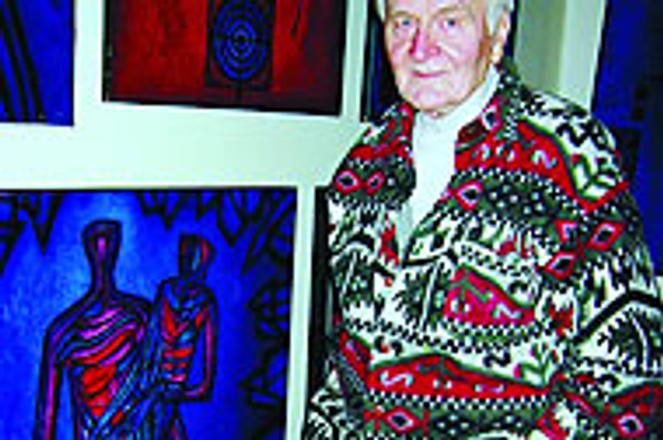KRÁĽ stands by his works.
photo: Miloš Skalický
RECORDS on colourful stained glass windows reach back to the ninth century, though the art fully developed in the 12th century. The huge works found in Gothic cathedrals represent the apotheosis of the art. Stained glass windows often showed scenes from the Bible and they were used to educate the illiterate as well as evoke mystical awe in the congregation.
The northwestern Slovak town of Žilina is well known for its stained glass windows, though the most famous are not in a church. They are at the town's main railway station.
Local painter Fero Kráľ created the works that dominate the station's hall. Now 85, Kráľ has created 260 monumental works and over 1,000 drawings and graphic pieces.
"Long ago Žilina was an important junction. The first train came here 134 years ago. Today's station building was finished in the mid 1940s. Ten years later it had become a dirty, ugly building. I was asked to turn it into a decent place for passengers. I called my colleague, Róbert Dúbravec, and together we created five big circa six-metre-high windowpanes," says Kráľ.
The first thing they needed to do was to decide what to picture in them. It was the communist era and everything was dominated by the period's classic motifs. "We managed to get our idea to promote the folk culture of the Žilina region through - from Liptov, Kysuce, Orava and Čičmany," Kráľ says. The quotations in the windows are taken from folk poetry.
First the artists made small blueprints and then transferred the drawings on to full window-sized paper. Artistic glassmakers in Brno imprinted the works on paper onto glass. In 1956, the works were delivered to Žilina in one-metre sized glass pieces, where they were stuck together and placed in the windows.
"Windowpane production is 1,000 years old. Cut pieces of colourful glass are put into a lead framework in the shape of a letter 'H', which are then set into an iron framework. The smaller the parts are the better the effect is - like in a symphonic orchestra. The advantage is that when damaged, one needs to replace only one piece of glass," Kráľ said.
The windowpanes are at their most beautiful in the sunny afternoon, when the leaded glass splits the sunrays and they create colourful spots of light on the floor of the station. At night, with the inside lit up, one can look up and admire them from outside.
Miloš Skalický is a journalist with the Žilinské noviny
Author: Miloš Skalický


